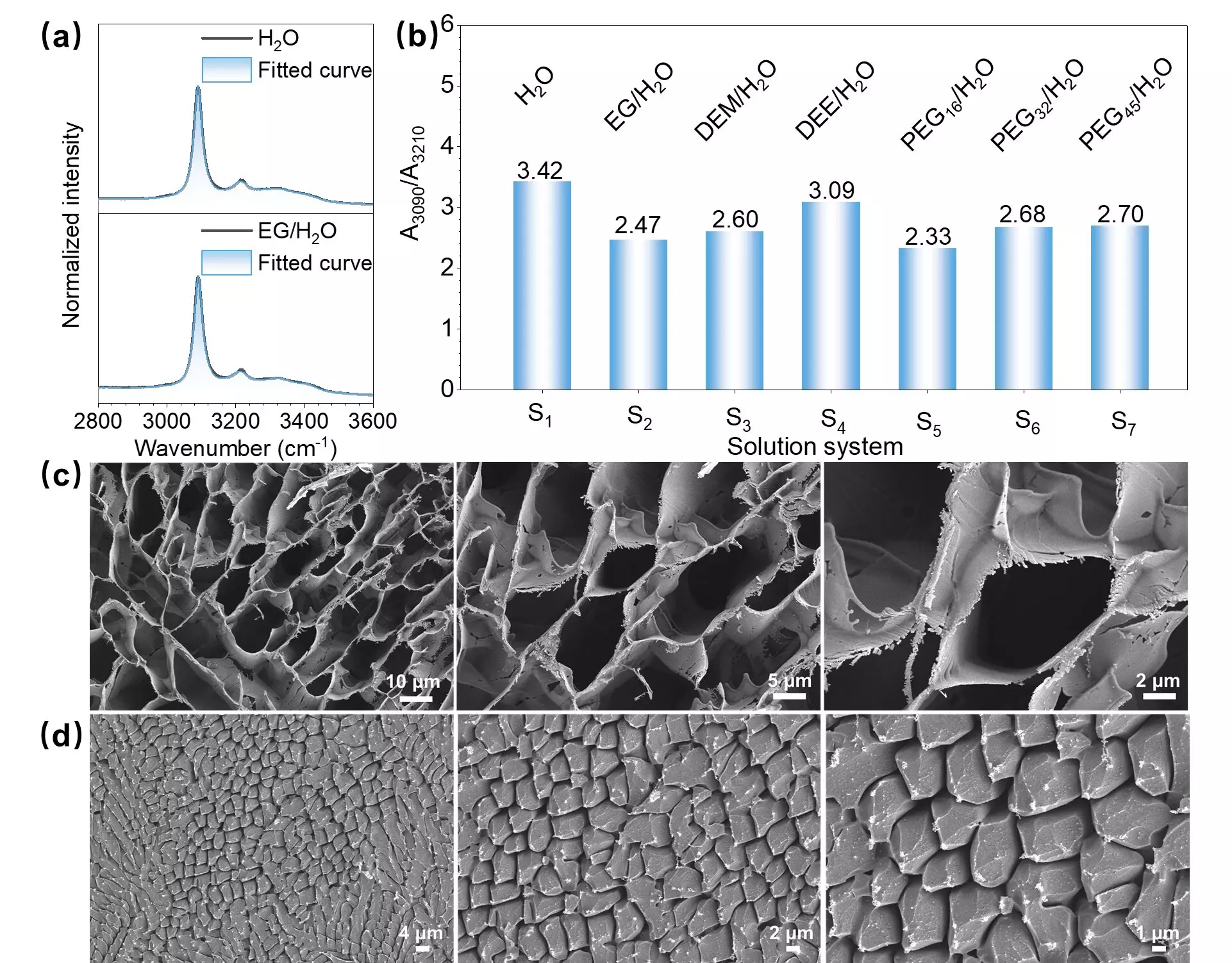Ice has been considered a crucial element in the emergence of life due to its ability to facilitate the concentration of organic compounds. Traditional methods of studying organic molecules in ice have been limited to absorption-based spectroscopic techniques, which restrict measurement sensitivity. However, a research team from the University of Science and Technology of China has developed a new method using organic phosphorescent probes and phosphorescence spectroscopy to detect water-ice microstructures.
The research team utilized an emission-based method to study organic molecules in water ice. By using a phosphorescent probe, acridinium iodide (ADI), they were able to indicate microstructural changes in water ice, distinguishing between crystalline and glassy forms. The addition of trace amounts of ethylene glycol (EG) led to distinct spectroscopic changes in the aqueous solution of ADI, highlighting the transformation of ADI molecules in water ice from undissolved aggregates to dissolved ion states.
The study revealed that adding trace amounts of small or large molecular organics to water can inhibit the crystalline order of water ice, providing a more convenient and sensitive method for studying water-ice-organics interactions. Phosphorescence spectroscopy was also shown to reveal morphological differences in water-ice microstructures when different trace organics were added, consistent with Raman spectroscopy and scanning electron microscopy.
The use of phosphorescence spectroscopy for studying organic molecules in water ice opens up new possibilities for understanding the role of ice in the emergence of life. By exploring the microstructural changes in water ice induced by trace organics, researchers can gain valuable insights into the interactions between organic compounds and icy environments. This study marks a significant advancement in the field of astrochemistry and astrobiology, paving the way for further research into the origins of life on Earth and beyond.


Leave a Reply